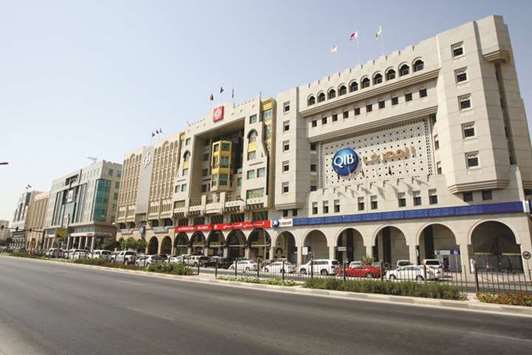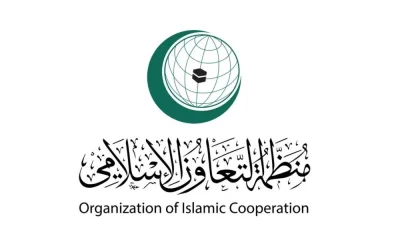The global Islamic finance industry reflected improved performance in 2017, extended its global footprint and, particularly in the Gulf Cooperation Council (GCC) nations, was able to adapt to changing economic conditions caused by volatile oil prices and diplomatic issues in the region.
This is the round-up of the eagerly awaited fifth edition of the Islamic Finance Development Report and Indicator (IFDI) 2017, which was presented at the 24th World Islamic Banking conference 2017 held from December 4 to 6 in Bahrain. The report was commissioned by the Islamic Corp for the Development of the Private Sector (ICD), the private sector development arm of the Islamic Development Bank, and put together by business intelligence provider Thomson Reuters.
The IFDI bases its results on five indicators to measure the development of the $2.2tn Islamic finance industry, which are quantitative development, knowledge, governance, corporate social responsibility and awareness. It also compiles extensive statistics on the industry from 131 countries and highlighted the best-performing nations within each key area of performance. It notably includes Iran, a country left out by most other Islamic finance studies due to the seclusion of its Islamic finance sector, which puts the size of other Islamic finance jurisdictions in a proper relation.
Measuring the five indicators through a methodical formula, the IFDI determines the overall performance of a country’s Islamic finance industry. The awarded IFDI values range from 0 to 129, the highest is achieved by the top performing country.
This year, Malaysia, Bahrain and the UAE kept leading the IFDI country rankings for the fifth consecutive year, while the GCC remains the leading regional hub for the industry. Countries in the Commonwealth of Independent States, Europe, as well as East and West Africa saw notable improvements in their IFDI values, demonstrating continued growth of Islamic finance in non-core markets, the report states. Oman remained unchanged on rank four, while Saudi Arabia dropped two notches to rank seven, and Jordan, Qatar and Indonesia fell one notch each to ranks nine, ten and 11, respectively.
Pakistan climbed up one notch to rank five, and Kuwait one notch to rank six.
The big newcomer in the IFDI ranking is the small Southeast Asian sultanate of Brunei, which made a jump from rank 14 to rank 9, surpassing Qatar and Indonesia and kicking Indonesia out of the top ten. Brunei’s success was mainly owing to better performance of the awareness indicator due to a number of government initiatives to boost the Islamic finance industry in the country, as well as in the knowledge indicator, attributed to the involvement of higher education institutions and Islamic finance institutions in supporting Islamic finance activities in Brunei. The country also registered a significant increase in the quantitative development indicator which measures how institutions and governments are adapting to economic conditions such as reacting to low prices for hydrocarbon exports, Brunei’s main economic lifeline.
“Incorporating Islamic finance in different strategies can be seen in the many steps taken by governments across different IFDI indicators,” said Khaled al-Aboodi, CEO of ICD, adding that “this was noticed when some authorities intervened in Islamic social funds management, raised literacy in the industry among potential market players through formal education systems, organised roadshows targeting potential market players, or built a roadmap to plot development of the overall industry.”
With regards to the GCC, the region’s average performance improved in 2017 after a slight downturn in the previous year. The main driver was the quantitative development indicator, helped by a partial rebound in oil prices to around $55 per barrel from $30 at the beginning of 2016. According to the report, the higher oil price had an immediate impact on the performances of several industry sectors such as Islamic banking and Islamic funds. However, despite this, the GCC’s IFDI value rose less than in other regions because the rest of the indicators performed less consistently.
Time will tell whether the indicator values will improve over the next year after several economic and financial reforms were announced in the GCC during 2016 and 2017 following the collapse of oil prices. Both conventional and Islamic banks in the region had to adapt to the new market conditions and trim their business towards consolidation and efficiency as their profit margins came under pressure from lower consumer spending and governments’ fiscal consolidation measures.
In Saudi Arabia, a merger of rebranded Alawwal Bank and Saudi British Bank is likely, which would create a new large Islamic window entity and increase competition with Al Rajhi Bank and National Commercial Bank. A cross-border banking merger is also being considered between Kuwait Finance House and Bahrain’s largest lender, Ahli United Bank. Bahrain’s Ithmaar Bank, in turn, is in the process of restructuring. In the UAE, National Bank of Abu Dhabi and First Gulf Bank merged to become First Abu Dhabi Bank in April 2017 and also combined their large Islamic window operations.
In Oman, the Islamic finance industry is expected to improve further after the country issued a number of sukuk and streamlined its regulatory infrastructure following the introduction of sukuk and takaful laws in 2016. In Qatar, a three-way merger is under way between Islamic banks Barwa Bank, Masraf Al Rayan and the conventional International Bank of Qatar in order to create a new fully-fledged Islamic bank, reducing the number of commercial Islamic banks operating in Qatar to three, with the other two being Qatar Islamic Bank and Qatar International Islamic Bank. The merger talks are said to be in the final phase.

A view of the Grand Hamad street that hosts Islamic as well as conventional banks and financial institutions in Doha (file). The global Islamic finance industry reflected improved performance in 2017, extended its global footprint and, particularly in the GCC nations, was able to adapt to changing economic conditions caused by volatile oil prices and diplomatic issues in the region, according to an IFDI report. PICTURE: Nasar TK


